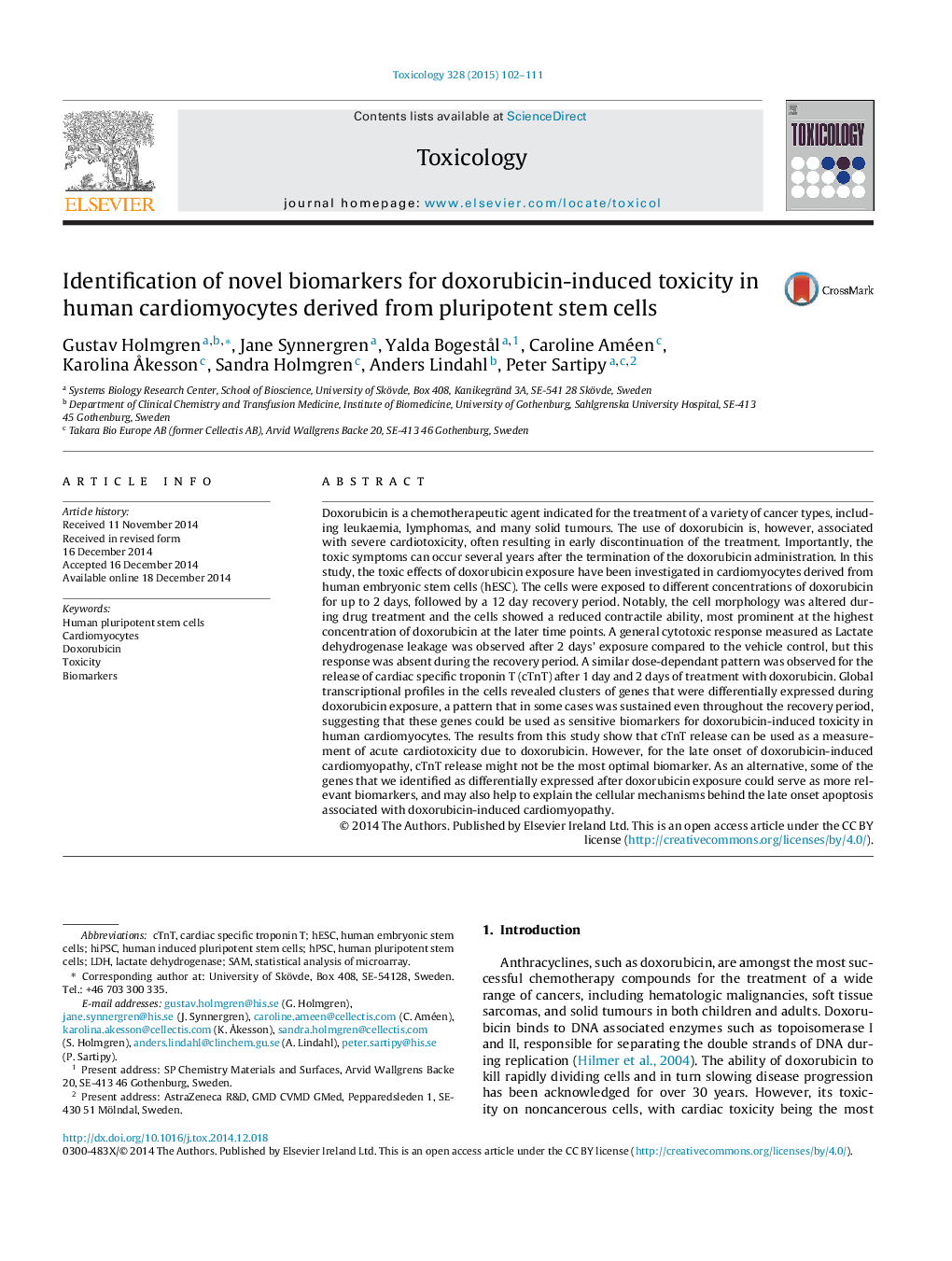| کد مقاله | کد نشریه | سال انتشار | مقاله انگلیسی | نسخه تمام متن |
|---|---|---|---|---|
| 5859120 | 1562328 | 2015 | 10 صفحه PDF | دانلود رایگان |
Doxorubicin is a chemotherapeutic agent indicated for the treatment of a variety of cancer types, including leukaemia, lymphomas, and many solid tumours. The use of doxorubicin is, however, associated with severe cardiotoxicity, often resulting in early discontinuation of the treatment. Importantly, the toxic symptoms can occur several years after the termination of the doxorubicin administration. In this study, the toxic effects of doxorubicin exposure have been investigated in cardiomyocytes derived from human embryonic stem cells (hESC). The cells were exposed to different concentrations of doxorubicin for up to 2 days, followed by a 12 day recovery period. Notably, the cell morphology was altered during drug treatment and the cells showed a reduced contractile ability, most prominent at the highest concentration of doxorubicin at the later time points. A general cytotoxic response measured as Lactate dehydrogenase leakage was observed after 2 days' exposure compared to the vehicle control, but this response was absent during the recovery period. A similar dose-dependant pattern was observed for the release of cardiac specific troponin T (cTnT) after 1 day and 2 days of treatment with doxorubicin. Global transcriptional profiles in the cells revealed clusters of genes that were differentially expressed during doxorubicin exposure, a pattern that in some cases was sustained even throughout the recovery period, suggesting that these genes could be used as sensitive biomarkers for doxorubicin-induced toxicity in human cardiomyocytes. The results from this study show that cTnT release can be used as a measurement of acute cardiotoxicity due to doxorubicin. However, for the late onset of doxorubicin-induced cardiomyopathy, cTnT release might not be the most optimal biomarker. As an alternative, some of the genes that we identified as differentially expressed after doxorubicin exposure could serve as more relevant biomarkers, and may also help to explain the cellular mechanisms behind the late onset apoptosis associated with doxorubicin-induced cardiomyopathy.
Journal: Toxicology - Volume 328, 3 February 2015, Pages 102-111
